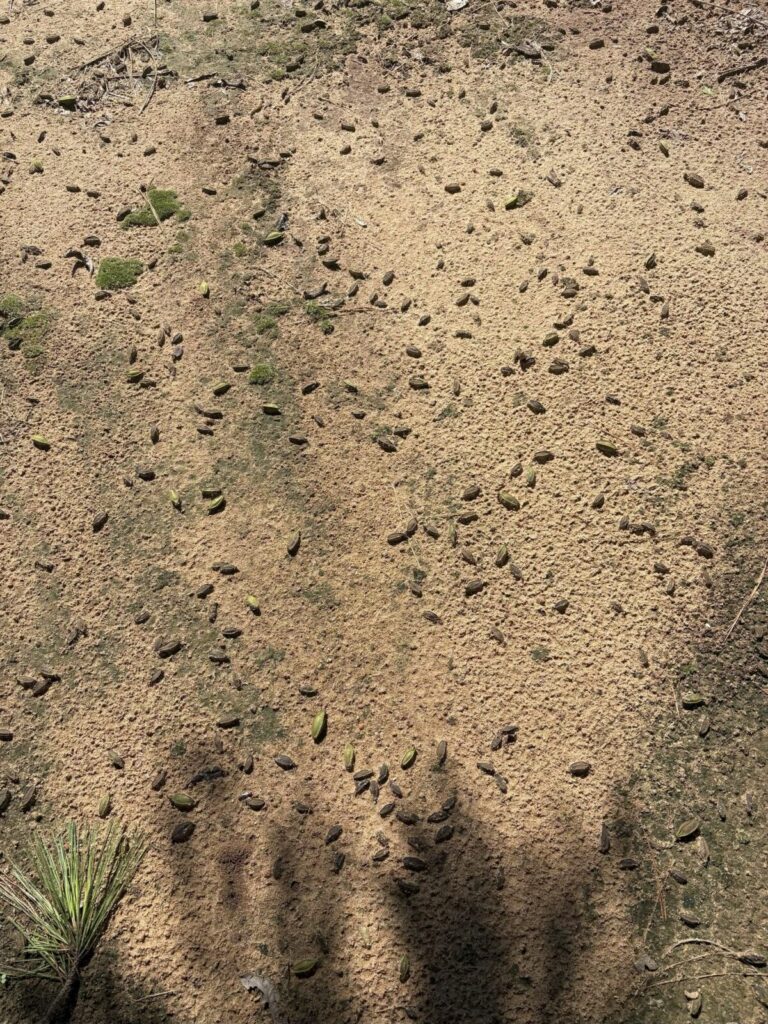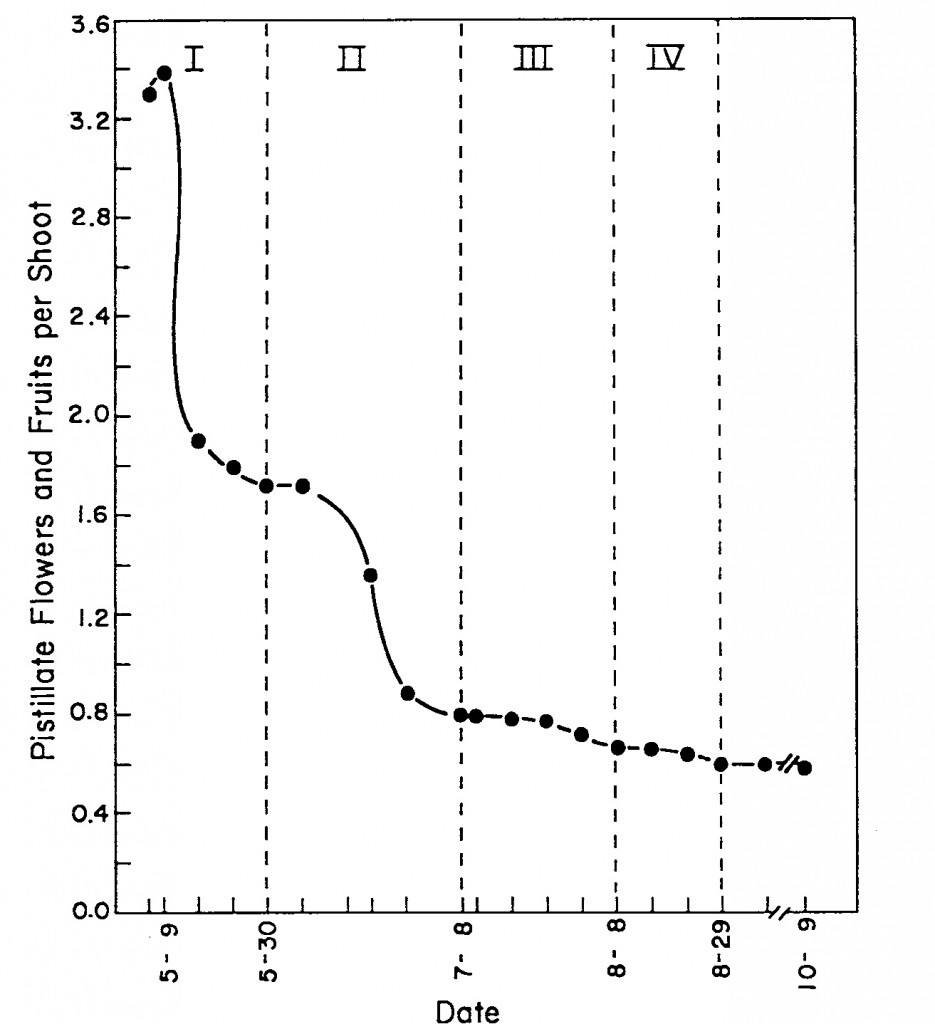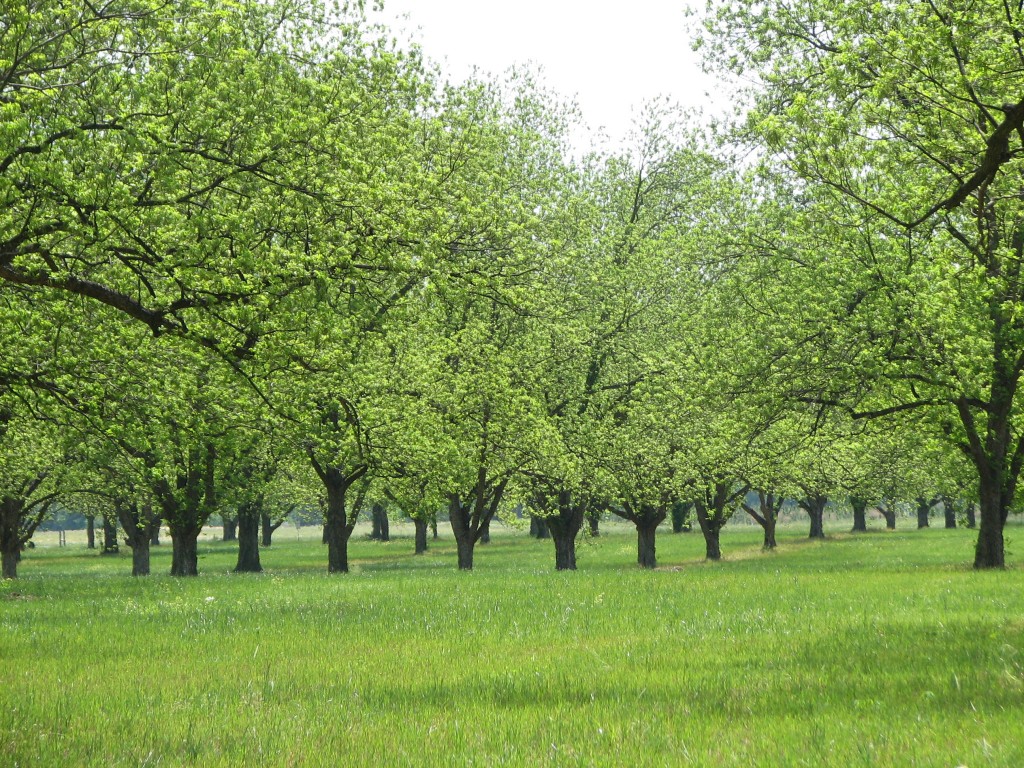
We’re seeing some nut drop out there at the moment across multiple varieties. Pawnee is quite noticeable but this is not unusual. Most of what we are seeing is a natural drop and is known as the “third drop”. It typically begins just before rapid fruit expansion (abt 55 days after pollination) and is considered to result from failure of the endosperm to develop properly (Sparks, 1992). It is accentuated by self-pollination and drought, the latter of which hasn’t been a problem this year. A certain percentage of the fruit will drop. That is the normal physiological process of the tree. Some years they may drop more than others but this typically stays within a moderate range of 30-50% of the nuts in a cluster. Trees with a heavy crop will look like they are losing more fruit but on a percentage basis it tends to fall within the range expected. Just bear in mind that though the nuts are dropping, the sky is not falling. Happens almost every year. Don’t obsess over nuts on the ground when the trees still bear a good crop. Many will say at the moment “My trees are losing all their nuts”, but once the nuts are fully sized they see that in fact, they still have a pretty good crop. Keep looking up.

Above figure taken from Sparks, D. 1992. Pecan Cultivars: The Orchard’s Foundation.
During July we will also see a couple of pests that can lead to more nut drop. These include shuckworm and nut curculio. See previous posts on identification of these pests. Use a targeted material like Intrepid, Intrepid Edge, or Dimilin for shuckworm. Pyrethroid applications right now will flare aphids and mites and lead to further sprays for these pests as well. If you have curculio I would look very closely at the crop size and the amount of drop before pulling the trigger on these. If you have a good crop, you can take a little drop from curculio and allow them to thin it for you. The lighter crop you have the more you must consider spraying. The issue is that you will have to spray a pyrethroid to get curculio and this will cause you problems with aphids and mites the rest of the season, which will get expensive , so be sure you have a serious enough problem with curculio before pulling the trigger on them.
Its also about time (July 7-Aug 7) to collect leaf samples. See previous post here on this process. This, along with soil samples, is the only way to determine if and where you can save on your fertilizer applications next year and also see if you need to add any more for the current year.
